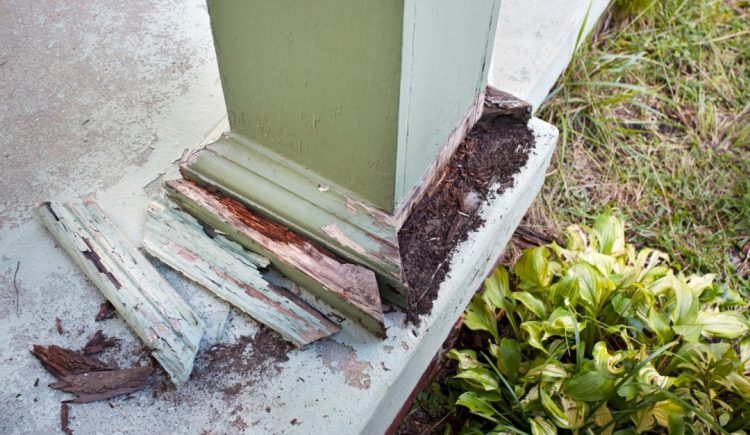Termites can damage wooden structures in your house, as well as furniture, cabinets, paper and flooring. If your house gets damaged by termites, your homeowners insurance policy may help you in some cases, but not others.
Insurance Won’t Pay for Damage That’s Due to Neglected Maintenance
Homeowners insurance is intended to cover sudden problems that a policyholder can’t prevent, such as storm damage. Insurance doesn’t cover damage that occurs because a homeowner neglects maintenance. From an insurance company’s perspective, a homeowner has a duty to care for a house, have it inspected by professionals, have repairs made when necessary and take precautions to prevent issues.
Often, homeowners don’t have their homes inspected or treated for termites and don’t realize that they have a problem until the pests have been causing damage for years. If you don’t have your house checked for termite damage and take steps to keep termites away, your homeowners insurance company probably won’t be willing to pay for repairs if a termite problem is discovered.
Your Insurance Company Might Pay Under Certain Circumstances
Sometimes termites or other pests cause damage that leads to another problem. For example, pests may damage electrical wires. If that damage leads to a fire, a homeowners insurance company might pay a claim because a fire is a covered peril.
In some cases, a covered peril damages a house, and that damage leads to another problem. If, for example, a storm damages your roof and lets moisture into your house, and that moisture attracts termites, your insurance policy might cover termite damage.
Know How to Spot Signs of Termite Damage
Homeowners often don’t realize that they have a termite problem because they don’t recognize telltale signs of an infestation. You might see damage to wood inside or outside your house. If hardwood floors are sagging or buckling, you might assume that it’s a sign of a moisture problem, but it might actually be due to termites.
Termites don’t always cause visible damage. If you tap on wood with a screwdriver and hear a hollow sound, that can be a sign that termites have caused hidden damage.
Termites frequently leave behind tunnels near wood or next to a house’s foundation. Termite tunnels are small tubes and it’s easy to mistake them for mud.
You might see termites. They’re pale yellow, and have two pairs of identical wings and straight antennae. If you see wings that were left lying on the ground, that’s a sign that termites have been there.
Find Out What Your Policy Does and Doesn’t Cover
Homeowners insurance companies cover many of the same perils and have similar stances on exclusions, but specifics differ from one company to another. If you have any questions about your coverage, review your policy or contact your insurance company or agent.











